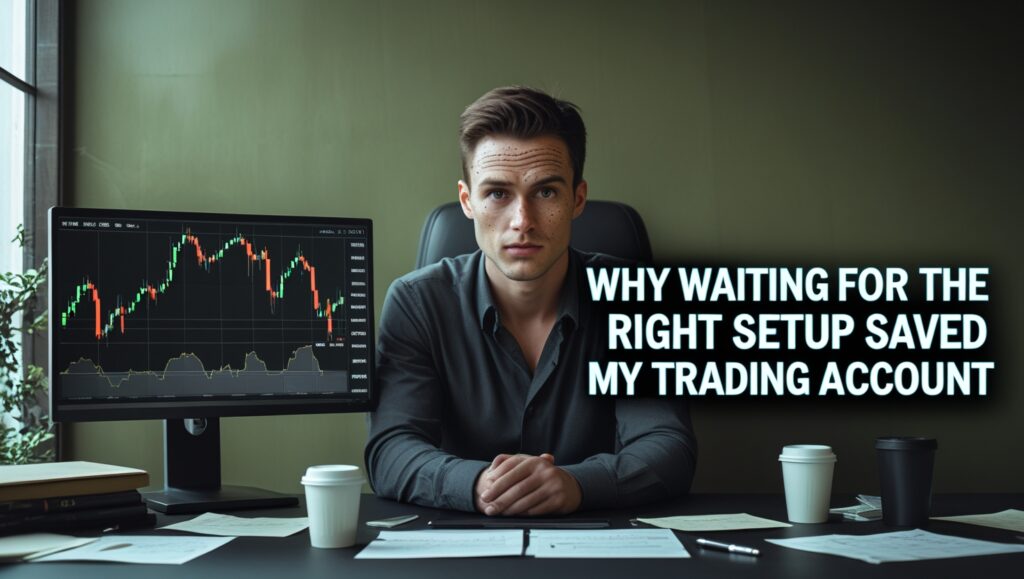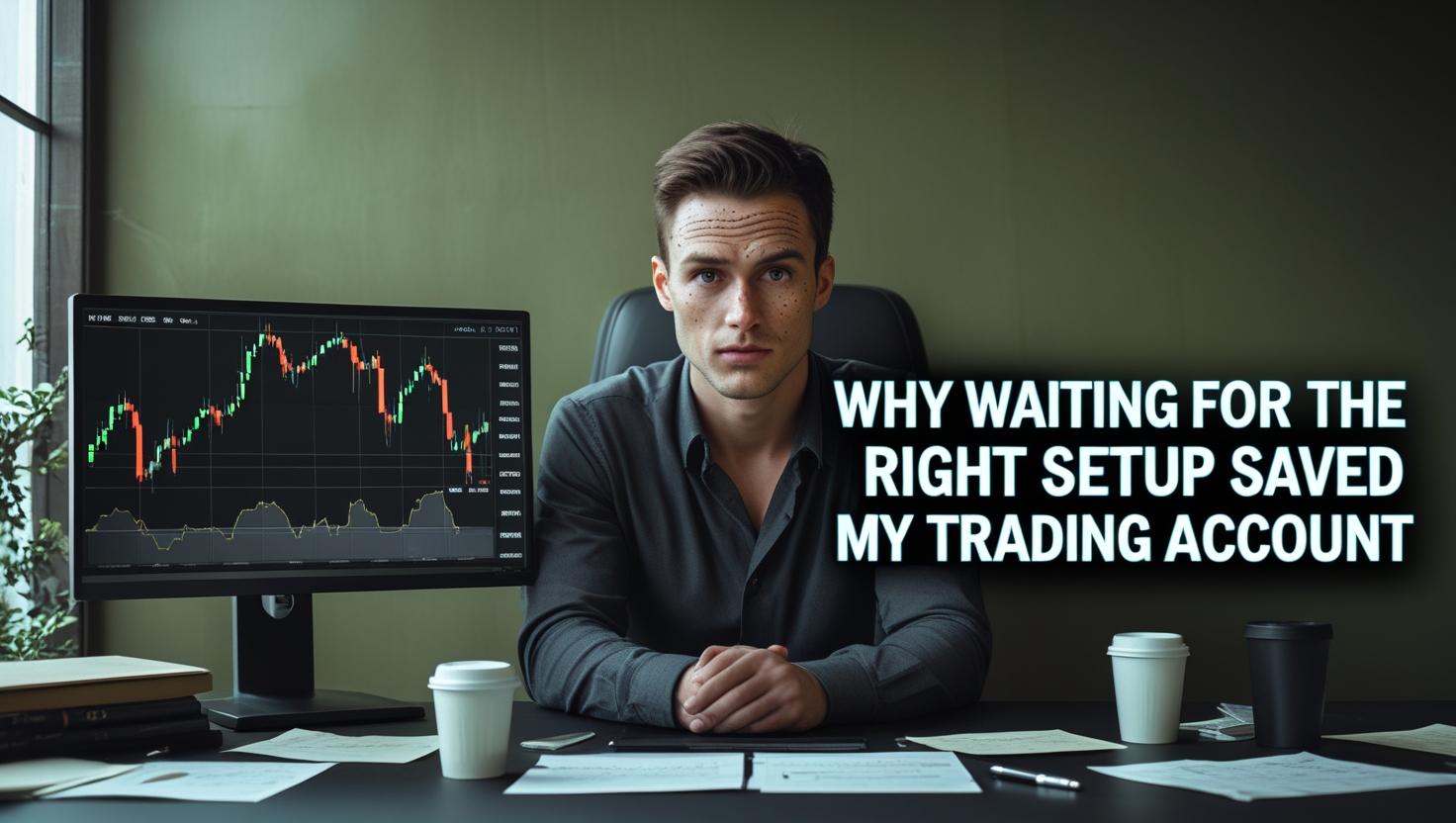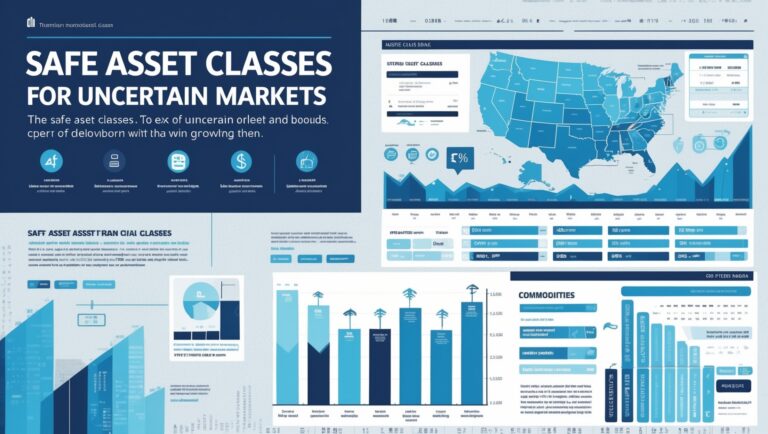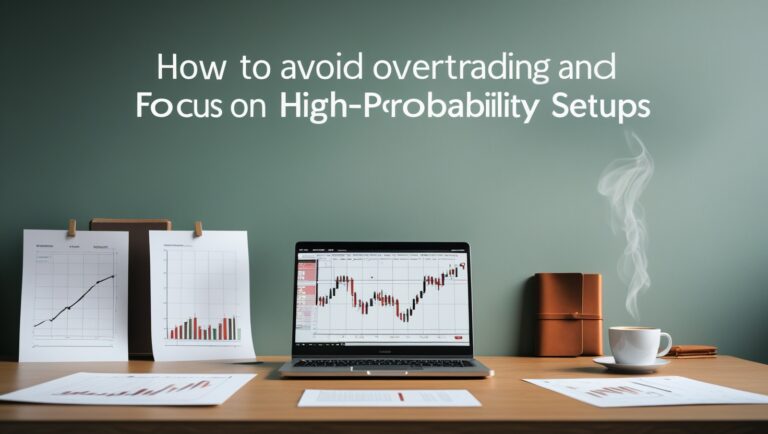Why Waiting for the Right Setup Saved My Trading Account
Why Waiting for the Right Setup Saved My Trading Account
There was a time when I thought the more trades I took, the better trader I’d become. I felt like if I wasn’t in a trade, I was wasting time. But the truth is — that mindset almost blew up my account.
Everything changed the moment I learned to wait for the right setup. That patience? It didn’t just improve my trades — it saved my account.

Table of Contents
Chasing Every Move Was Draining My Account Fast
Early on, I’d take trades just because the market was moving. I didn’t care if it was part of my plan or not. If it looked exciting, I clicked buy or sell. But over time, those random trades piled up losses, not gains.
Overtrading, especially without high-probability setups, led to one thing: frustration. And frustration led to revenge trades. You probably know how that ends — deeper losses and a shaken mindset.
The Shift: From Impulsive to Intentional
The turning point came when I started journaling and reviewing my trades. I realized most of my winners had one thing in common: they followed a clean, structured setup I had seen before and trusted.
So I made a decision. I would only trade when everything aligned — the pattern, the level, the volume, and the timing. I didn’t care if that meant I only traded a few times a week. Quality over quantity became my rule.
Patience Gave Me an Edge
Once I embraced patience, I saw instant changes. My losses shrank. My stress levels dropped. And most importantly, I stopped gambling. I started waiting for high-probability setups and letting them come to me instead of forcing entries.
The truth is, most days the market isn’t doing anything worth risking your capital on. But if you wait long enough, the right setup shows up — and when it does, you’re prepared, focused, and sharp.
My Trading Account (and Mindset) Recovered
Before this shift, I was on the verge of quitting. I hated looking at my account and seeing it bleeding from trades I knew I shouldn’t have taken.
But when I slowed down, created a repeatable strategy, and committed to waiting for ideal setups, everything turned around. I started trusting myself again — and that confidence built real consistency.
Want to See the Strategy That Pays My Bills?
I put my exact process into a simple ebook. If you’re tired of second-guessing trades and want a clear strategy that doesn’t rely on 50 indicators, this will help.
Inside, I break down how I find the right setups, how I manage my risk, and how I make just a few trades a week — and still cover my monthly expenses. It’s not magic. It’s just structure, patience, and execution.
Final Thoughts
The best traders I’ve studied aren’t the ones trading 20 times a day. They’re the ones who wait, stalk the market, and strike when it counts. I had to learn that the hard way — but I’m glad I did.
If you’re struggling with your account, your strategy, or your confidence, take a breath. Step back. And wait for the trade that meets your rules, not just your emotions. That discipline might be the very thing that saves your trading journey too.
One of the hardest lessons I had to learn was this: not trading is also a position. Sitting on my hands felt wrong at first, like I was missing out. But the truth is, some of my best trading days are the ones where I don’t place a single trade.
Before, I used to force entries because I wanted to feel productive. I’d stare at the screen for hours and convince myself that something “might” happen. The setup wasn’t clean, the volume wasn’t there — but I’d still press the button. And most times, I regretted it.
Over time, I realized that successful traders aren’t always active — they’re selective. They wait. They have a set of rules, and if a trade doesn’t check every box, they skip it without hesitation. That kind of patience is what separates amateurs from professionals.
Another big change came when I started using a checklist. I’d go through each criterion before entering a trade: Is this a clean pattern? Is there volume confirmation? Are we near a key level? If anything was missing, I passed. That little habit saved me from so many emotional decisions.
By waiting for the right setup, I also gave myself the gift of clarity and focus. Instead of feeling overwhelmed by dozens of charts and alerts, I narrowed my attention to just a few stocks. I knew exactly what I was waiting for — and that gave me power.
And I’ll be honest: the days I trade less, I sleep better. There’s no stress from bad entries, no emotional hangovers from revenge trades. I end the day knowing I stuck to my plan — whether I took a trade or not.
Something else happened when I stopped trading junk setups — I started to actually enjoy trading again. I wasn’t fighting the market. I was flowing with it. The pressure lifted, and trading became more of a craft than a chase.
There’s a myth out there that you have to trade every day to grow. I believed that too, until I saw my account slowly leak from unnecessary trades. It wasn’t until I pulled back and focused only on A+ setups that I saw real growth.
If you’re struggling with inconsistency, I suggest you audit your trades. You’ll likely find that your losses come from setups you didn’t fully believe in. That’s what happened to me. And it’s what made me commit to waiting, no matter how long it took.
And here’s the thing — when the right setup finally comes, it just feels different. There’s clarity. Confidence. You’ve seen it before. You trust it. That’s the kind of trade that can wipe out five mediocre ones — if you’re patient enough to wait for it.
If you’re tired of blowing up your account on sloppy trades and want to trade with more discipline and intention, start here:
👉 Pay Your Bills with Stocks
This ebook breaks down exactly how I choose my setups, manage risk, and stay consistent — without overtrading or relying on luck.
At the end of the day, trading isn’t about activity — it’s about accuracy. And learning to wait for the right setup didn’t just change my P&L — it changed my mindset. I trade less, stress less, and earn more. That’s the win I was chasing all along.

Stay ahead in the stock market! Subscribe to our newsletter and receive exclusive stock flow reports, trading insights, and actionable tips directly in your inbox. Join thousands of traders who get our updates first.







